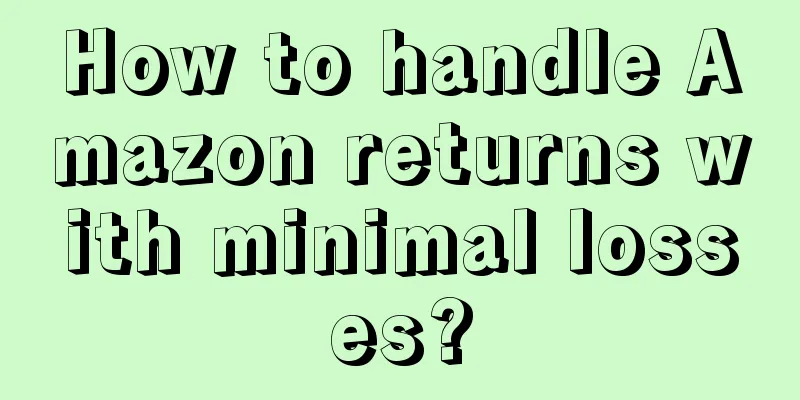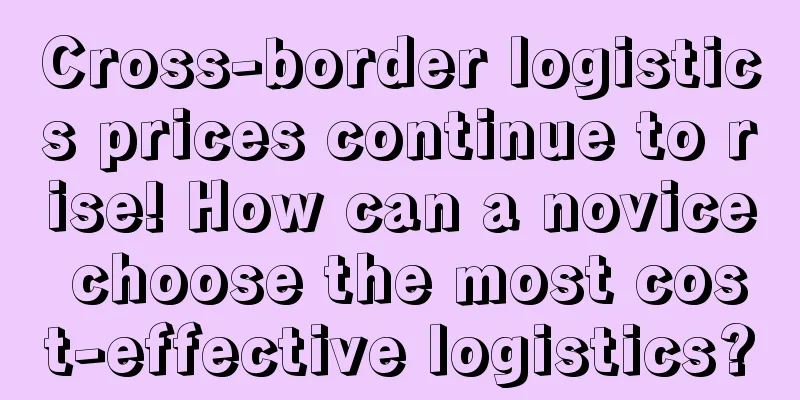How to handle Amazon returns with minimal losses?

|
Returns, the nightmare of Amazon sellers. In addition to the various reasons for returns, people are helpless and sometimes have to pay out of their own pockets. Amazon likes to make trouble, and sellers can do nothing about it. They can only bear it and think of countermeasures quickly. But when the order is returned, the sellers are really miserable! Generally speaking, sellers on Amazon need to first send their products to Amazon warehouses, where Amazon employees will sort and count the products. After customers place orders, employees will pick up the products from the shelves and send them to customers. This is the basic business model of the Amazon platform. This process is supported by the Amazon platform, and sellers only need to be responsible for shipping, operating stores, and conducting a series of promotional activities. However, for sellers, even if you have received payment from buyers, it does not mean that the order has been successfully completed, because buyers may still return the goods. Statistics show that on Amazon, nearly 30% of online orders are returned - this is almost four times that of physical stores. The return problem is not easy to solve in a short time. After all, there are too many reasons for order returns. How do sellers handle return requests? The buyer submits a "return application"; the seller can check the return application and the reason for the return in the "Order"-"Manage Returns" in the background . (Sellers should handle it according to the "Amazon Product Return Policy") Sellers will encounter two situations in the return application: 1. Close the application If the seller does not accept the return request, you can click "Close Request". After submission, Amazon will send an email notification to the buyer, including the reason why the seller closed the request. Tips: It is recommended to negotiate with the buyer in advance ; the seller only has the right to close, and the buyer only has the right to cancel the return. If the buyer applies for a return and it has been approved, but the goods have not been sent back or the buyer does not want to return the goods, the seller does not need to do anything at this time. 2. Approve return request To accept the buyer's return request, please click the "Approve Return Request" button. The system will send the seller's return address and instructions to the buyer via email, and the seller only needs to wait for the buyer to return the goods. Tips: The payment will not be automatically returned to the buyer. Sellers need to process the order refund on the "Manage Returns" or "Manage Orders" page after receiving the return. Approving the return request on the "Manage Returns" page will not affect the seller's performance. The return rate should be controlled within a reasonable range. The most feared thing is that the return rate remains high. In addition to causing great profit losses to sellers, returns may also incur additional packaging and transportation costs. If the goods are damaged during transportation, the seller will not be able to sell them again. For self-shipping sellers, the cost of shipping and returning far exceeds the value of the product itself, which will be very troublesome to handle. If the return rate is too high, the listing may be removed from the shelves and cannot be sold. Main reasons for returns 1. Wrong size 2. The actual product does not match the picture 3. The product was damaged during transportation 4. The product is defective or does not work 5. Fraud Return suggestions and precautions 1. The buyer states that the product is defective, but in fact it is not. At this time, the seller can file a complaint with the platform and ask for repair of the loss caused to the seller's performance by the return. 2. If the product is priced less than $50 , it is recommended not to argue with the buyer or ask the buyer to send the product back for a refund, as this will cause dissatisfaction and leave a bad review. 3. If the product price is greater than $100 and the product is intact and the buyer is just dissatisfied, the seller can offer to refund part of the payment. If the buyer insists on a full refund, the seller can refund the full amount after receiving the returned product. 4. For domestic self-delivery, there are 5 aspects to consider when receiving a return application. 5. Sellers can actually give buyers a discount to avoid returning the product, because in the case of a return, the buyer may ask you to pay for the shipping costs, and even if the product is returned intact, the secondary sales value of the product has been reduced. 6. If the buyer does not understand the product size, performance, or returns the product without reason, the return shipping fee should be borne by the buyer. |
Recommend
Shein tops the US APP download list for the first time! Announces the launch of the new product line "EvoluShein"!
<span data-shimo-docs="[[20,"获悉,在“购物”APP中,...
ShipHero, a US logistics provider, launches new features to improve delivery efficiency for online sellers
ShipHero, a U.S. logistics provider, has launched ...
Do you really know how to open a case? What Amazon operational issues can be solved by opening a case? What details should be paid attention to when opening a case?
Everyone who does Amazon will encounter various p...
Thunderstorms continue! A batch of freight forwarders collapsed in 2024
The year 2024 is coming to an end. Looking back on...
Another wave of warehouse restrictions and capacity cuts is coming! Amazon strongly promotes capacity expansion services
In the past two days, some sellers have reported t...
What is ZPSPAPI? ZPSPAPI Review
ZPSPAPI provides one - stop services from system p...
Starting from scratch, Shopify's 30-day store opening tutorial - Day 22
In the last Shopify tutorial, we learned two ways...
Walmart has formulated new promotional pricing rules! Helping sellers increase product exposure!
<span data-docs-delta="[[20,"获悉,据外媒报道,沃尔玛正...
Amazon BUG! Expired coupons are restored, 1 million products are cleared!
Recently, a large number of "0 yuan purchases...
What is Dubsmash? Dubsmash Review
Dubsmash was founded in 2014. Users can lip-sync w...
What is Multi-Channel Fulfillment? Multi-Channel Fulfillment Review
The full name of multi-channel delivery in English...
What is CicekSepeti? CicekSepeti Review
CicekSepeti was founded in 2006 and is a domestic ...
What is Keyword In? Keyword In Review
Keyword In is a keyword search and analysis tool. ...
Shenzhen Daimai is on the verge of bankruptcy, with a net loss of 30 million in the first three quarters!
If we talk about the legends of wealth creation in...
In-depth analysis of the trading logic of Amazon's top sellers with annual sales of 100 million
Advertising is one of the important sources of tr...









